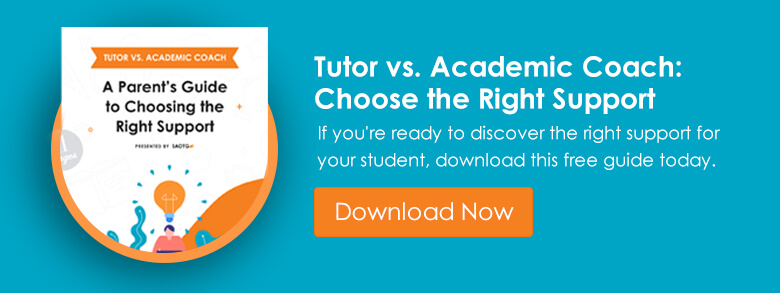In this time of uncertainty, flexibility is crucial. Parents, educators, and students alike must adapt to a dynamic learning landscape. Many students, especially those with learning differences, struggle with flexible thinking. To improve this, parents and educators must
find creative ways to inspire flexibility. The analogy I use to explain this to students is a construction detour. Let’s say you are driving from your home to school, but your usual route is blocked by construction. How might you adapt? Cognitive flexibility with academics is similar to a detour. Students must have a plan to get from point A to point B, but they need to develop alternate routes if the primary route is blocked by something outside of their control.
So, how do we improve cognitive flexibility in our students?
Here are 3 ways to help your students improve their cognitive flexibility:
Pursue Creativity
Divergent thinking means perceiving a situation or solving a problem in unconventional ways. The advantages of divergent thinking include the awareness of multiple potential solutions, less self-judgment, better reception to criticism, and a higher likelihood of a growth mindset. Although many teachers seek to encourage divergent thinking in the classroom, it can be harder for parents to do this at home. There are many ways to encourage divergent thinking at home. For example, parents can encourage students to ask more questions about what they are learning. If your student is completing a reading assignment, ask them to come up with five questions to ask by the end of the reading. For younger students, play a word association game. Write five to ten words down on a piece of paper and ask your students to create a story using only these words. Then, add five to ten more words and ask your student to add to the story using these additional words. Also, encourage your students to make connections and find patterns across subjects. At the dinner table, ask your students what they learned in each subject today. Then, prompt them with questions to increase their awareness of cross-disciplinary links. Another way to pursue creativity at home is to assign a wide variety of art projects, including drawing, painting, sculpture, or photography. Check out this resource for more ideas.
De-stress
Many studies have shown the detrimental effects of stress on cognitive flexibility. Stress and anxiety can heavily impact a student’s working memory, which is an essential component of the learning process. Reducing stress in the home is one of the best ways to help students improve cognitive flexibility. In general, parents and educators should do three things to reduce stress for students: model calmness, maintain normalcy, and validate emotions. Students are sponges. They replicate the actions of those around them, especially those of parents, teachers, and siblings. For example, if a parent struggles to maintain an organized desk at home, most of the time the student does as well. Utilizing the influence that we have on students is one of the best ways to fight stress. In other words, model calmness for your students. If you are panicked, they are panicked. If you are calm, they are calm. Furthermore, try your best to maintain normalcy in the home. In times of chaos, habits and routines are crucial. Encourage your students to plan their day, to maintain consistent sleep schedules, and to utilize timers to divide workloads into smaller chunks. Lastly, validating stress is an important component of reducing it. Emotions are inevitable. Parents and educators must react in an encouraging way to reduce the longer impacts of emotions. We encourage parents and teachers alike to utilize the “name it to tame it” principle from Dr. Dan Siegel to help students respond to emotions. By following these principles, we can help students improve their cognitive flexibility.
Teach to learn
My personal favorite technique to increase cognitive flexibility in students is a study technique called “teach to learn”. The old adage of “when you teach it, you learn it twice” never fails. When students have to teach the material that they learn, it forces them to use a variety of cognitive functions. Analogies, metaphors, drawings, and physical demonstrations increase cognitive flexibility while cementing the information in a student’s brain.
In short, cognitive flexibility is crucial as students grow and develop. During this time of flux, students need to learn how to adapt and remain calm. I hope the tips above help parents and educators everywhere support their students through improved cognition and neuroplasticity. For more tips like these, check out our other blog posts or head over to our services page to apply for a one-on-one academic coach.





